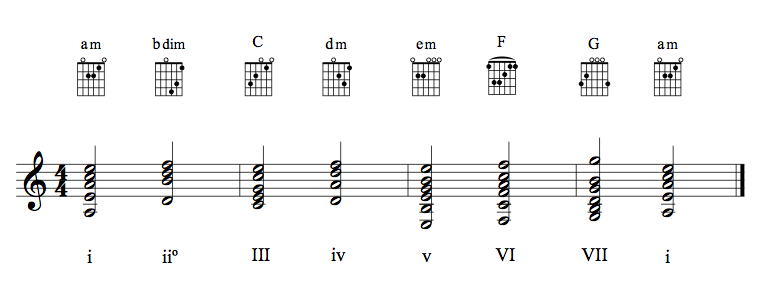As we discussed with major scales, there are chords that are formed on each scale degree. The same is true of minor (or any other kind of scale.) scales. below we have a picture of an “A minor” scale. This one is referred to as a “natural” minor scale since it shares it’s key signature with C Major and contains no altered tones. You will notice that all of the minor keys are listed next to their relative Major key because they share the same notes.

If we stack the notes from the scale in thirds, we get the diatonic chords in the key of “A minor”.

In this picture I have added chord diagrams for guitar. It is a good idea to memorize all of the chords in the major and minor keys. Once a player has done this, they gain a much better understanding of the way chords are arranged in songs. As I have mentioned elsewhere, this knowledge aids a player in learning songs by ear because they are more likely to figure out chords by logic as opposed to aurally. Additionally, if one intends to write songs, an understanding of keys and the chords within each one is invaluable.

